What is it and why is it needed?
The word “pergola” itself has a Latin origin: per- regere - translated “to direct”. From Italian, the word pergola is translated as an extension. The original purpose of the pergola in the garden is to support climbing plants. A pergola on the walkway or near the building also serves as a protective canopy from the scorching sun.
The pergola looks different from standard gazebos or awnings, the difference is noticeable primarily in the upper part of the structure. The roof of the pergola in the country house is not solid, but mesh.
Thanks to its aesthetic appearance and the use of plants, the building is part of the landscape. Long-flowering climbing plants - for example, clematis, kobei - are allowed on it so that it pleases with its appearance for the whole season.
In the photo there is a white pergola in the country
Pergola in landscape design performs several functions:
- support for loaches;
- creating a shade in the recreation area;
- zoning;
- decoration of terraces and entrance groups;
- masking unnecessary objects;
- placement of accents.
In the photo there is a lounge area on the street
What types of structures are there?
Depending on the comparison parameters, different types of buildings are distinguished.
Accommodation:
- Freestanding. It can be located in any convenient place - for decorating gates, paths, recreation areas in the center of the garden. Stands on supports, does not depend on other buildings.
- Extension to the house. Most often it is a pergola above the terrace, which on one side rests on the wall, on the other - on its pillars.
In the photo, landscape design with a canopy
Model:
- Awning. Usually it does not have support from below, hangs over the windows, protecting them from the sun's rays.
- Canopy. Also, as if "coming out" of the wall of the house, usually longer and narrower than the awning. Cars are placed under it, barbecue zones, playgrounds, patios are installed.
- Alcove. Self-contained construction away from home. Unlike a conventional gazebo, it does not protect against rain due to the lattice roof.
- Screen. Vertical pergola, more like a fence. Flowers are also woven along the net from the bottom up. Acts as an element of zoning.
- Tunnel. Several arches, connected by a single roof, are placed over the path or at the entrance to form a shadow and create a beautiful shaded corridor in landscaping.
- Rest zone. The design already includes benches and a roof, add a brazier and a table - you get a ready-made barbecue space.
Style:
- Country. A widespread, familiar option: a wooden model, characterized by a laconic design, straight lines. Usually not dyed, used in a shade of natural wood, goes well with greenery in the garden.
- High tech. A pergola in a modern style looks absolutely unconventional, being an art object of the local area. Lines can be either smooth, bent, or straight (typical for Art Nouveau). The production uses wood, metal, plastic.
In the photo, decoration with a stone at a summer cottage
- Oriental. They are made mainly of red tinted wood. It differs from the traditional model in the appearance of the roof: carved smooth transitions make the pergola look like a Chinese pagoda.
- Mediterranean.Structurally, it is no different from country, except for color: the main one should be white, complement it with black or wenge, or dark warm wood.
In the photo there are benches near the house under the roof
The form:
- Simple square. A classic option for a garden plot, distinguished by its correct shape.
- Simple round. Smooth lines look more harmonious at their summer cottage. More suitable for small areas or matching styles.
- Complex. Triangular, polyhedral, broken, bent - if you need to emphasize, bet on an irregular shape.
What materials are pergolas made of?
Pergolas should, firstly, not argue with nature, and secondly, they should correspond to the chosen style of interior and exterior. There are 5 main types of arches:
- Wooden. The wood is cheap, easy to handle and install, looks natural, fits into any style. Of the minuses, one can single out the relative fragility, susceptibility to infection by fungus, decay, damage by pests. But in general, if you approach the issue of protecting the tree with all responsibility, the pergola will live for more than 10 years.
In the photo there is a relaxation area with pillows
- Metallic. The design is based on a tube with a round or square cross section. The end result depends on the craftsmanship of the manufacturer: a well-made structure will practically last forever. The aesthetics of such a pergola is in the simplicity of lines; it will perfectly fit into the modern exterior of a country house in high-tech or modern style.
In the photo there is a patio near the house
- Forged. Also metal, but completely different: airy, bent, smooth. Forging is found simple - imitating mesh, geometric elements. And complex - with graceful floral details, fashionable monograms, original baskets, ligature, unusual ornaments. Usually made in the shape of an arch, suitable for traditional designs.
- Plastic. Differs in low cost, variety of designs, availability. Among the shortcomings - absolute non-environmental friendliness (which argues with the very idea of landscape design), often unattractive appearance. But if you need a temporary or inexpensive option, plastic is great. Plastic will not be visible under dense greenery, but it will cope with the main task (support, protection from the sun).
- Stone. Sheds made of one stone are rare - expensive, too massive, difficult to manufacture, can break under their own weight. Most often, columns are made of stone or brick, and transverse beams or a roof are made of wood or metal.
In addition to the listed options, there are combined ones:
- Wood + stone. A roof made of timber beams and beams on stone supports looks great.
- Wood + metal. Most often, the frame is boiled from metal pipes, complementing it with a wooden mesh.
- Metal + stone. A heavy metal roof is placed on a solid foundation of stone. Long lasting option.
Where is the best location?
There are two ways to choose the perfect place for a pergola in landscape design: based on the location or on the type of structure. In the first case, the type, size and other parameters are dictated by the space itself: for example, you need to zone the space, provide shade in a certain area, and tie up the plants. In the second, choose a pergola and look for a place in the garden to place it.
The options may be different:
- Pergola for flowers or grapes. If the plants are already planted, place the structure next to them and let the vines on the net. Over time, loaches will take up space and give a decorative look.
- Pergola with swing. Here you will rest in the shade, so the view in front of your eyes comes to the fore - the landscape should delight. Ideally placed overlooking a flower garden or other beautiful area.
- Pergola by the pool. It is not necessary to shade around the water completely, but a corner in the shade is necessary. Put juicy greens on the canopy, put a couple of sun beds with a table, and other furniture separately from below. After swimming, you will be pleased to sit in the shade with a book and a refreshing cocktail.
- Pergolas near the house.The installed visor almost does not take part in landscape design, but it perfectly shades the windows and creates space for relaxation on the street near the building.
What color is better to arrange?
The choice of color is a purely individual matter. To create an accent, choose contrasting shades: white, red, yellow, blue.
A light or dark shade of natural wood will help to complement the natural atmosphere. You can disguise the structure with the help of green and brown colors.
In the photo, the shading of the area near the house
How can you decorate?
The pergola is mainly decorated with plants. The main options are:
- grapes;
- hop;
- climbing rose;
- bougainvillea;
- morning glory;
- clematis;
- dichondra;
- kamsis;
- wisteria;
- ivy;
- kobei;
- sweet pea;
- actinidia.
In the photo there is a zone with a barbecue and garlands
In addition to plants, fabrics are used: flying organza or chiffon looks amazing in the yard, fluttering through the air from the wind. White fabric with wood looks amazing, creates the atmosphere of a gazebo by the sea.
Swings, hammocks, hanging chairs are installed under the roof - they look decorative, they are a favorite place for families to relax. Loungers with bright pillows or covers also serve as a kind of decor.
Depending on the style, decorate the pergola with other functional elements: red lanterns in an oriental style, garlands-rain in a modern one.
In the photo, the curtains in the gazebo on the street
Photo gallery
A pergola adjacent to the house or standing in the garden is an excellent decorative and useful element. Arrange it however you want, plant the plants and enjoy the decorative view during the summer season.

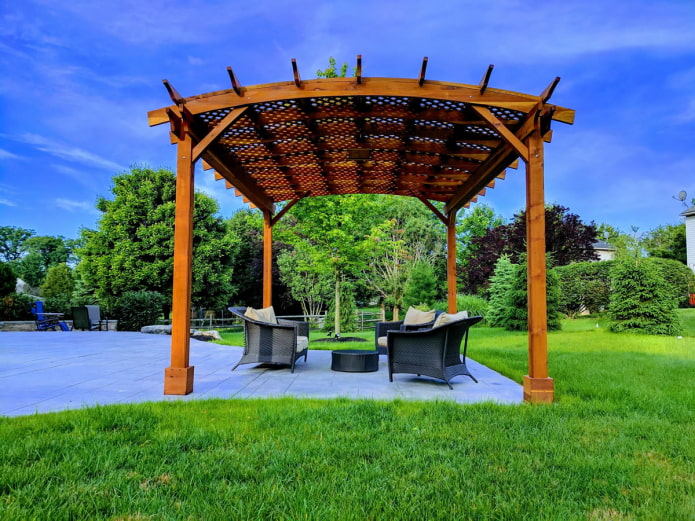
 10 practical tips for arranging a small kitchen in the country
10 practical tips for arranging a small kitchen in the country
 12 simple ideas for a small garden that will make it visually spacious
12 simple ideas for a small garden that will make it visually spacious
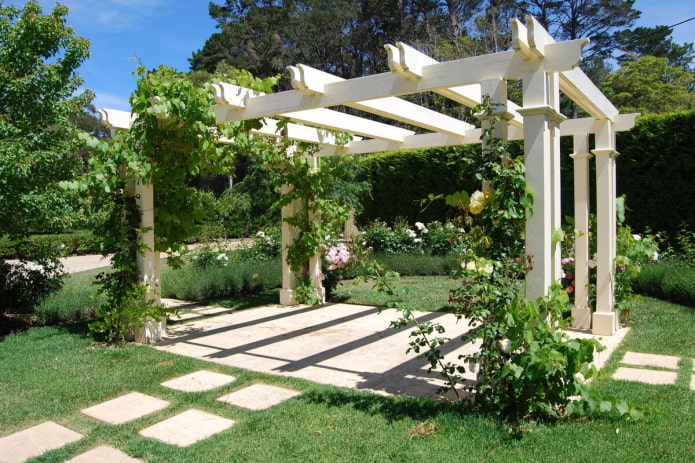
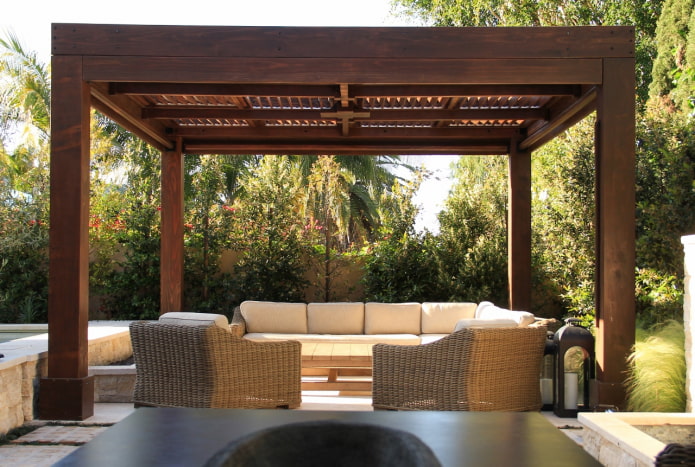
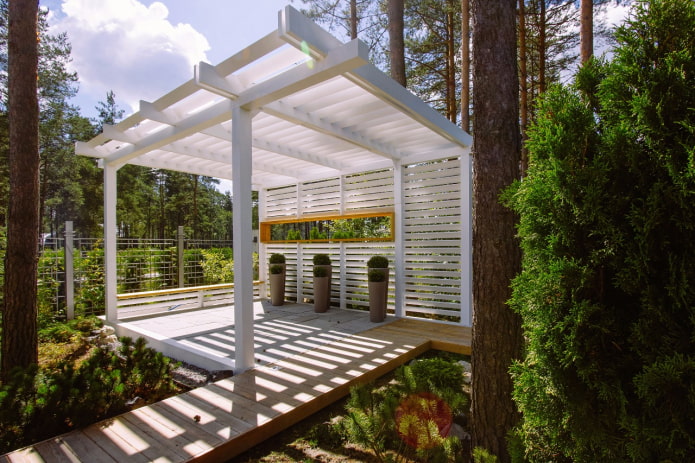
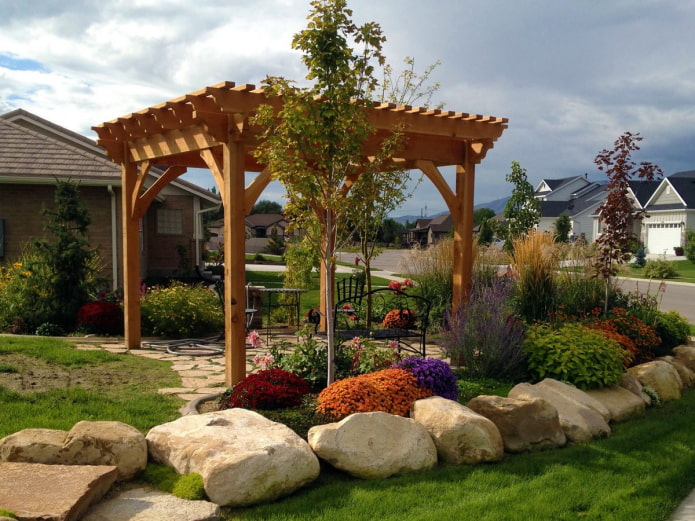
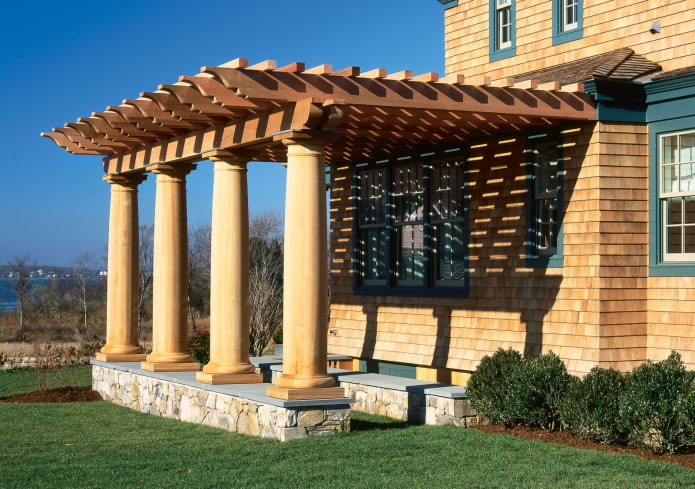

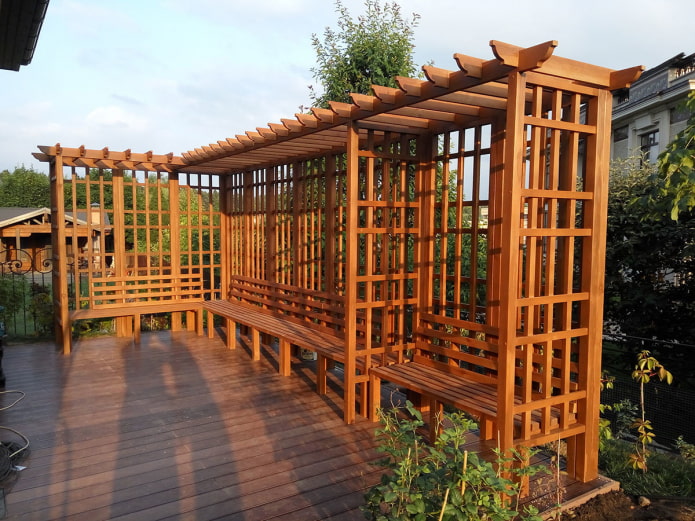
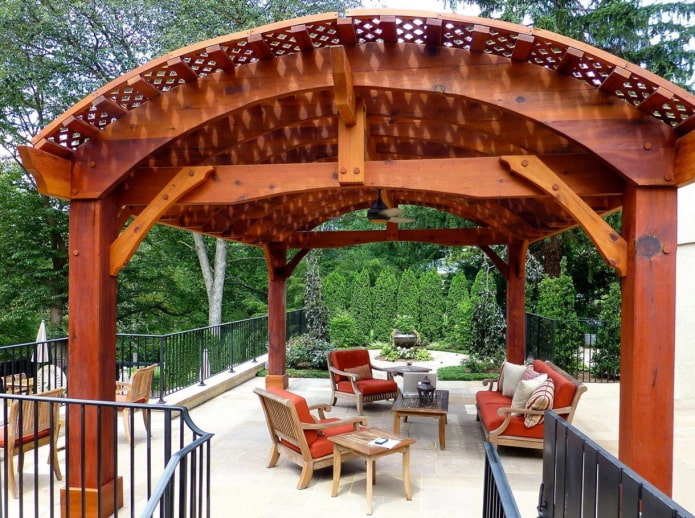
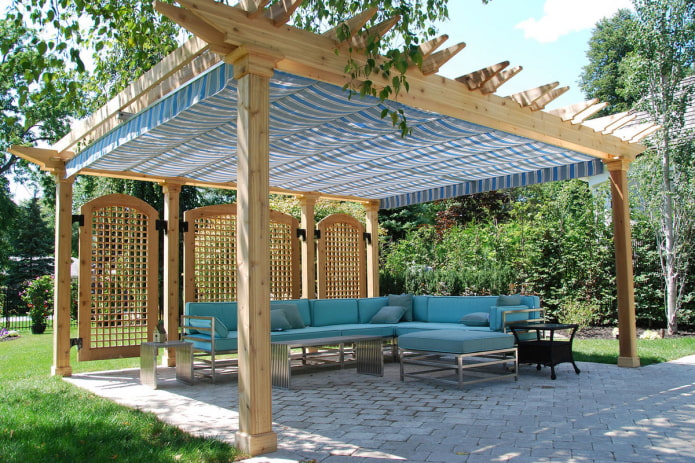
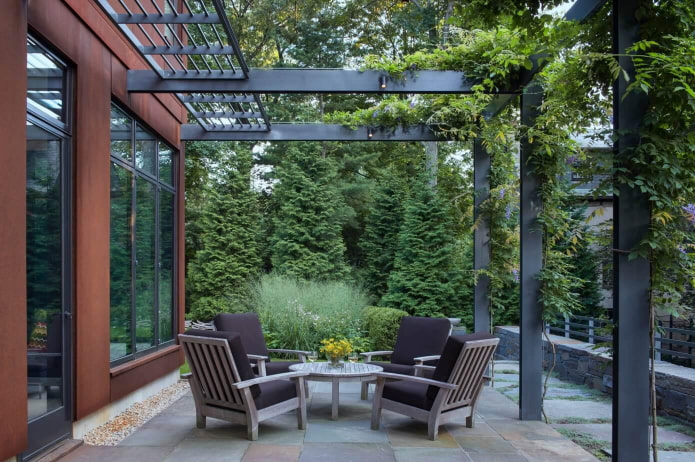
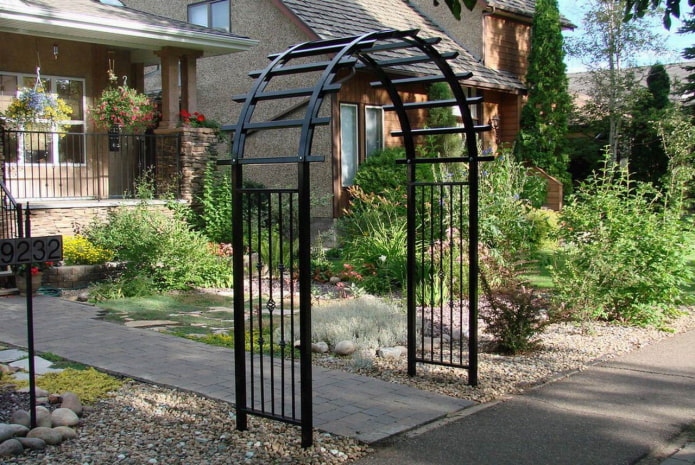
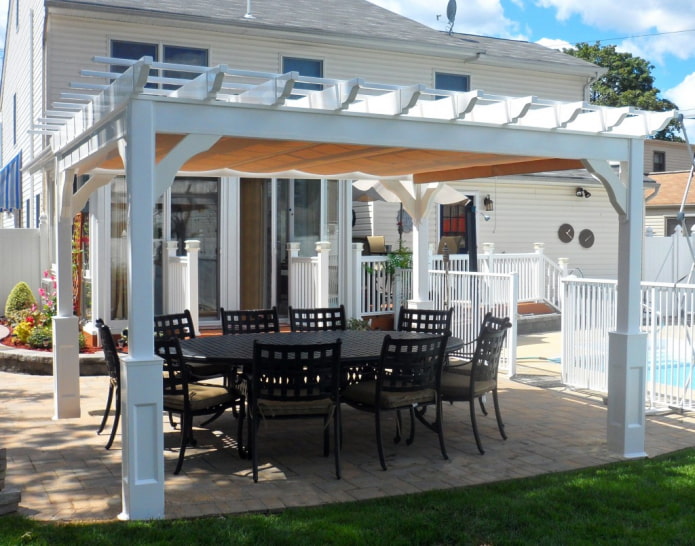

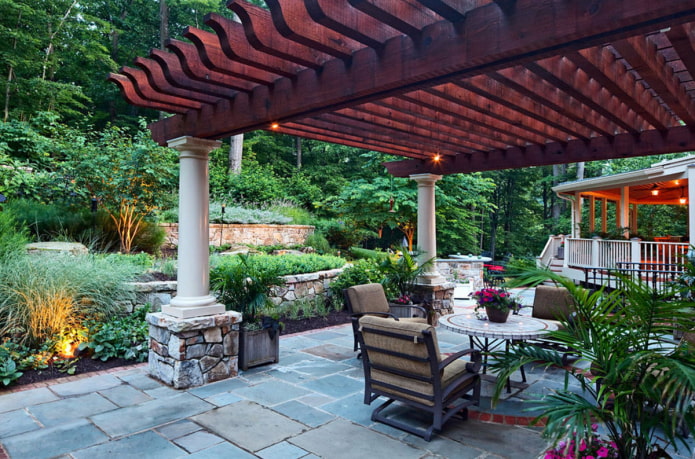
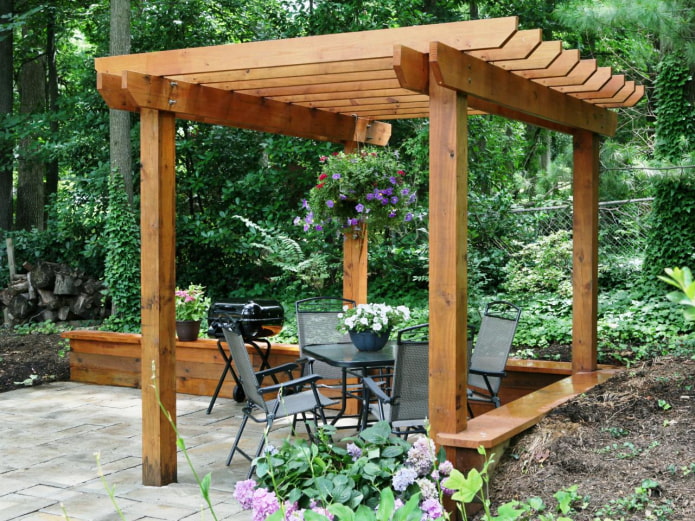
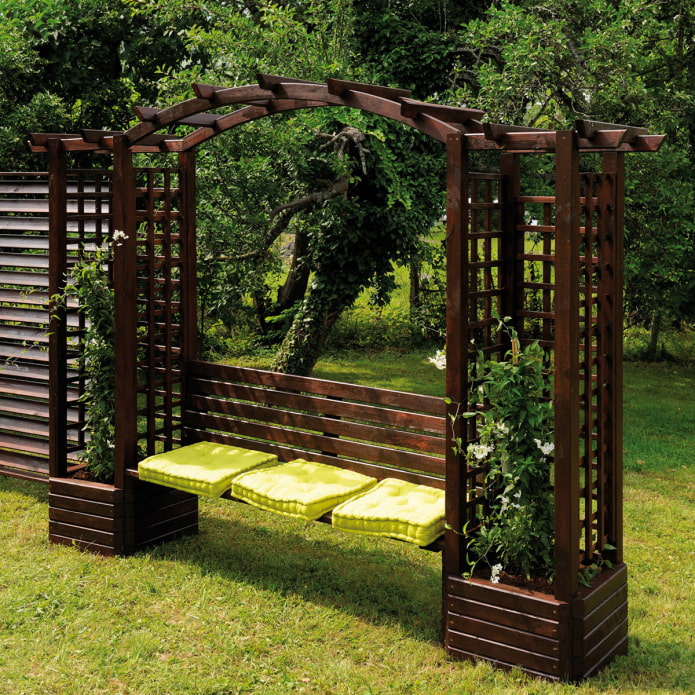
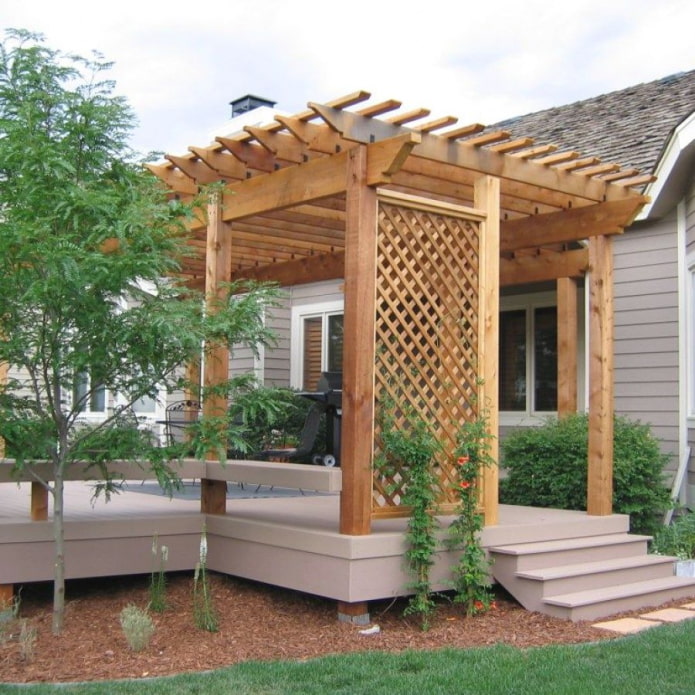
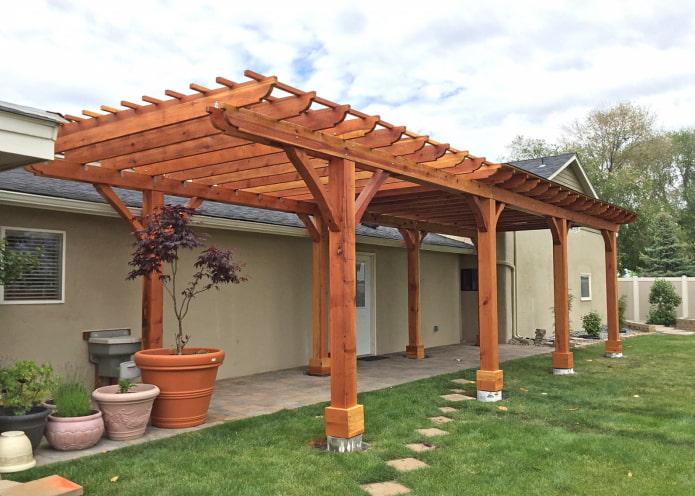
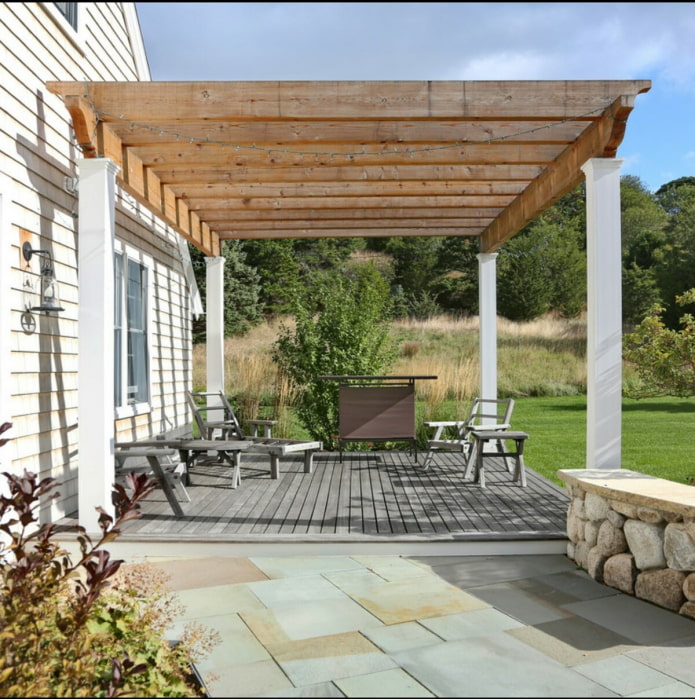

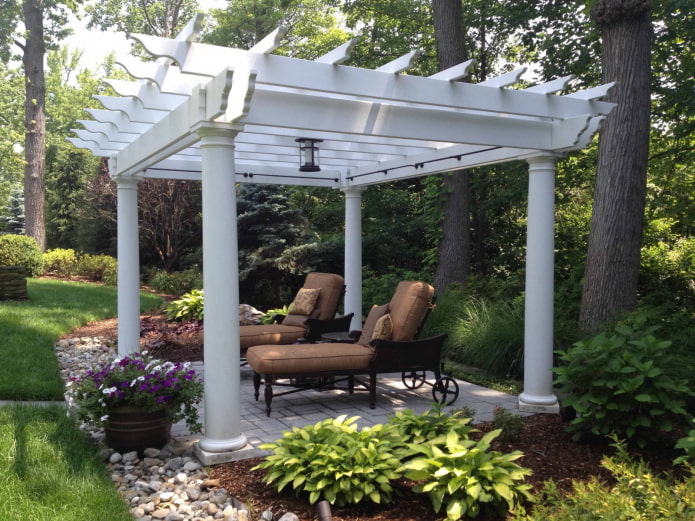
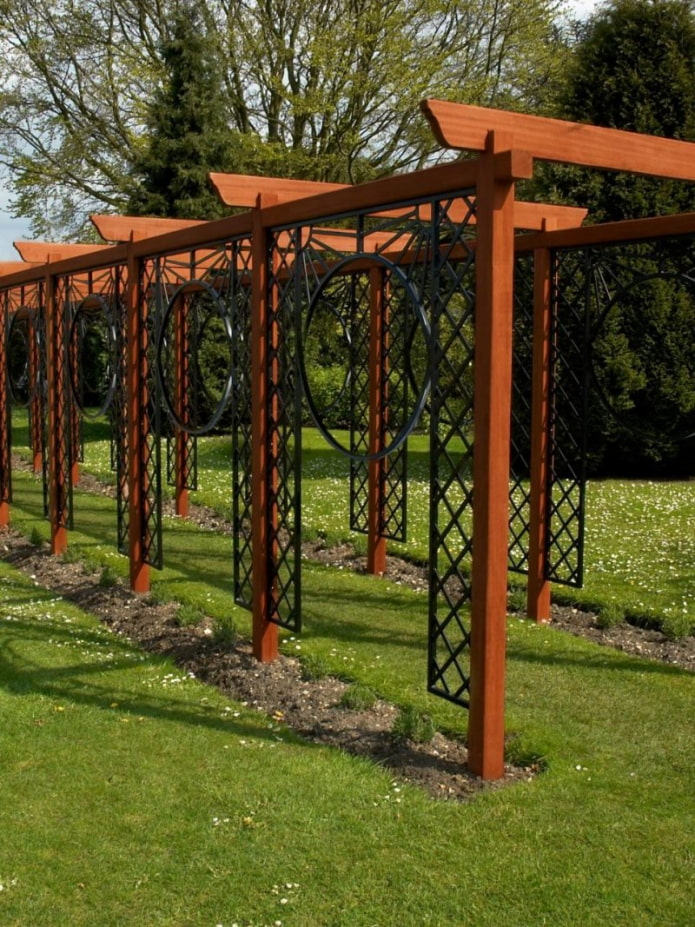

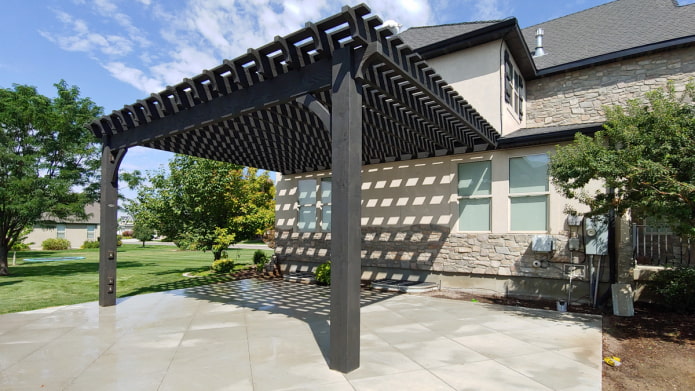
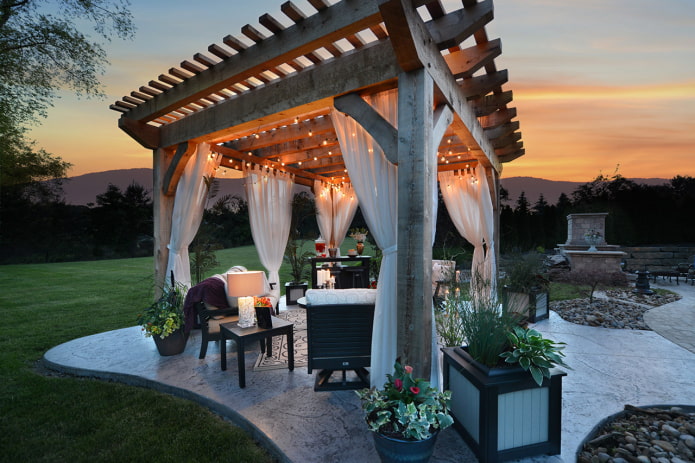
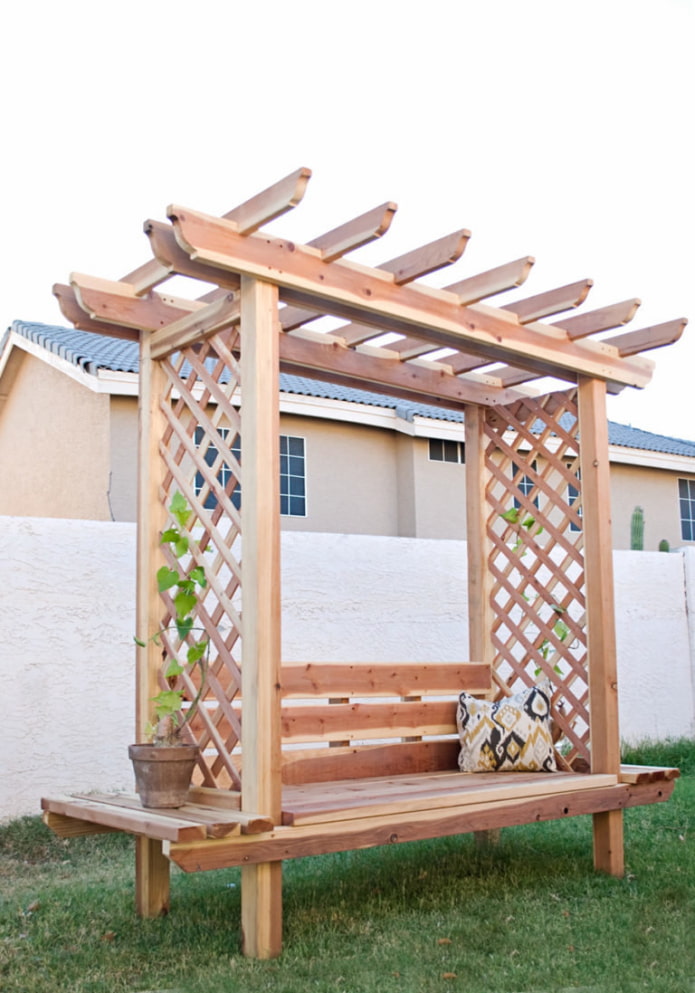

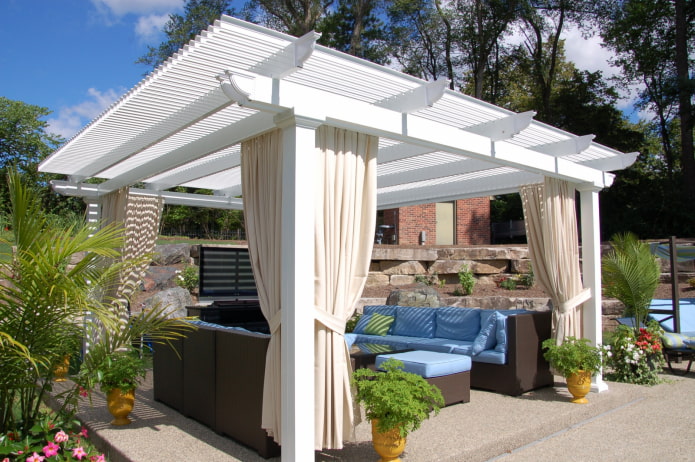
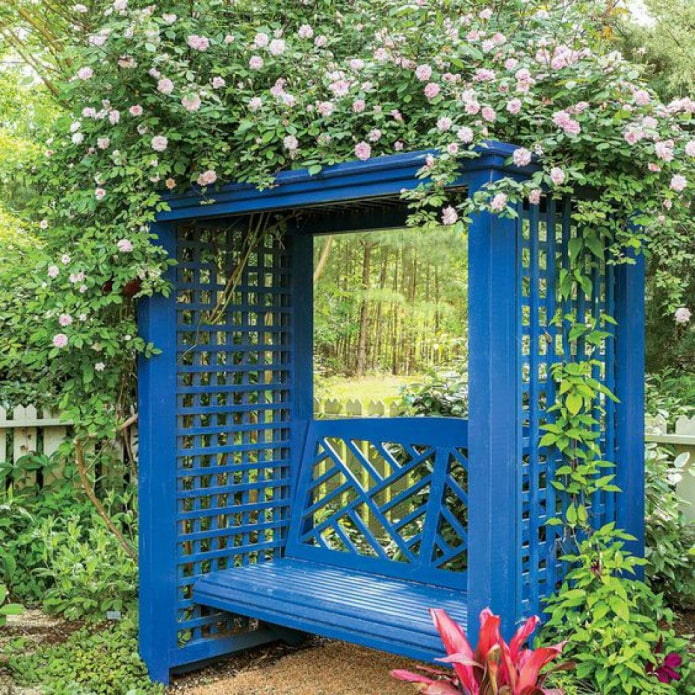
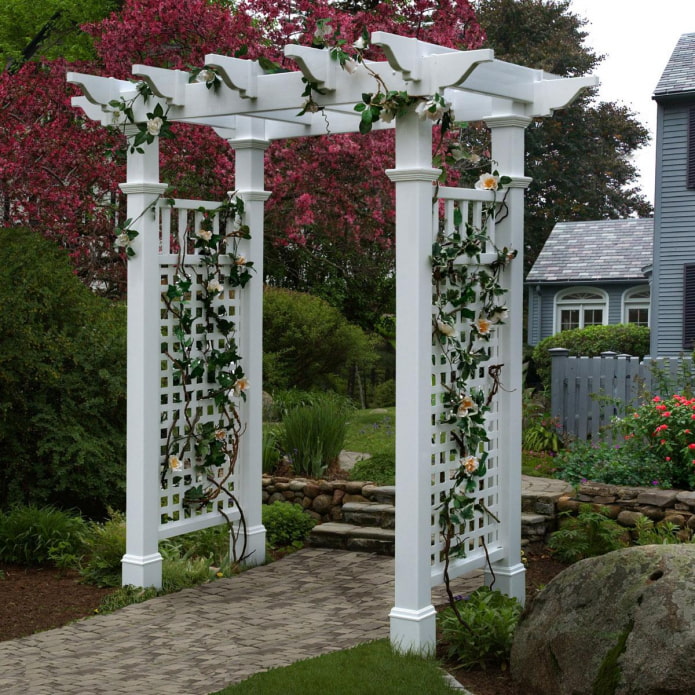
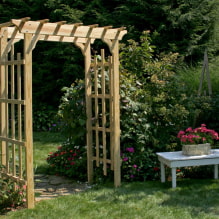
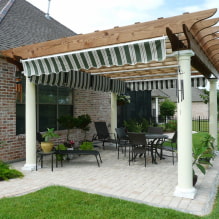
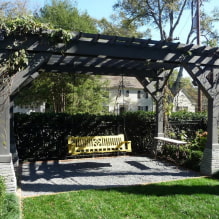

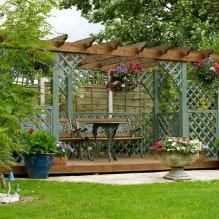
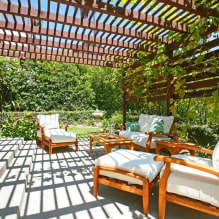
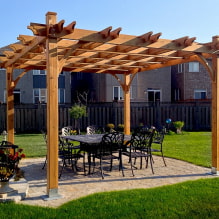
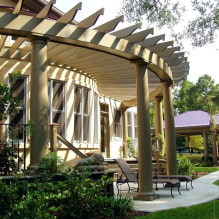

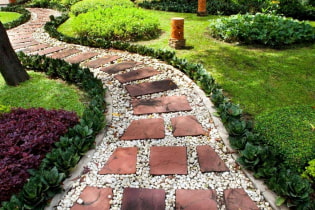 How to decorate garden paths beautifully for a summer residence?
How to decorate garden paths beautifully for a summer residence?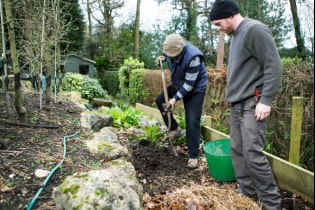 What fertilizers should be used in spring?
What fertilizers should be used in spring? How to use gabions on the site?
How to use gabions on the site?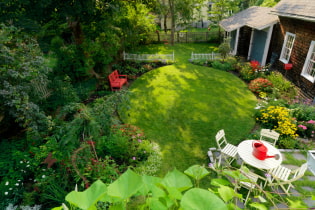 Landscaping of a summer cottage on 6 acres
Landscaping of a summer cottage on 6 acres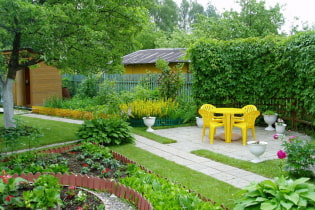 How to arrange the landscape design of a suburban area of 4 ares?
How to arrange the landscape design of a suburban area of 4 ares?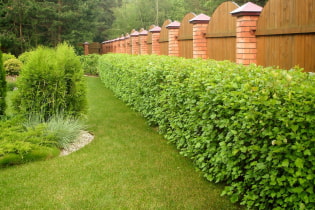 What plants can you make a hedge?
What plants can you make a hedge?